Early this week we finished building a cattle panel chicken tractor from 2x4s and 2 cattle panels.
I discuss the pros and cons as we build and test it.
After posting my build, my friend David shared pictures of a single cattle panel chicken tractor he’d built – I have to share it with you too!
David’s Cattle Panel Chicken Tractor Design
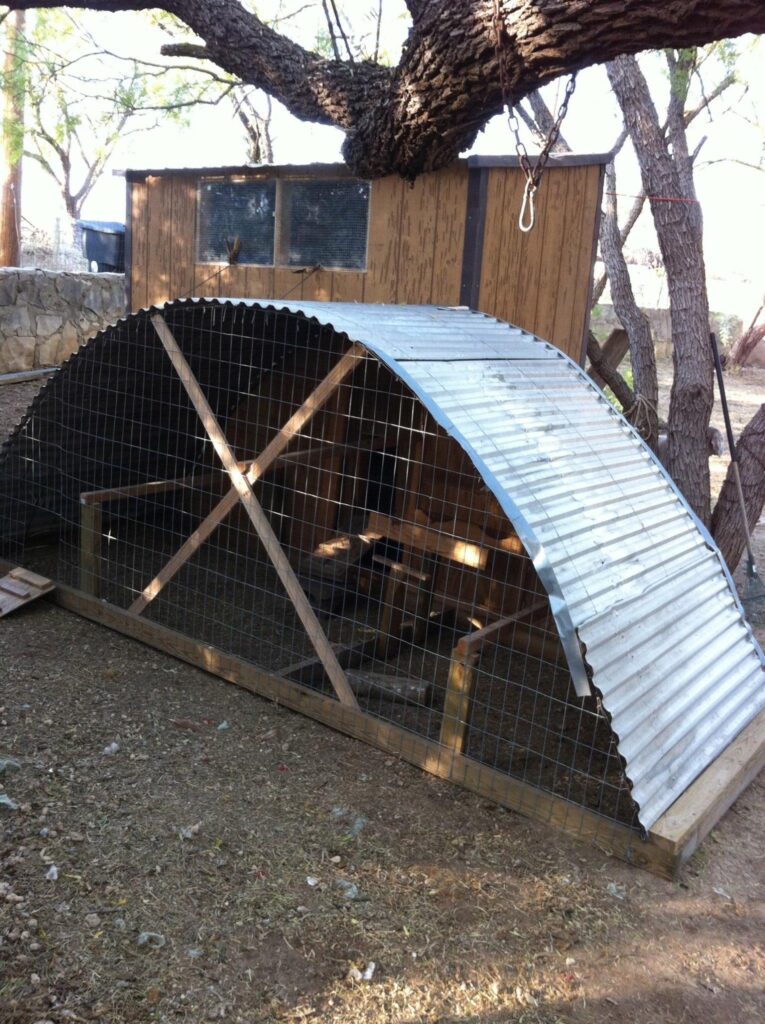
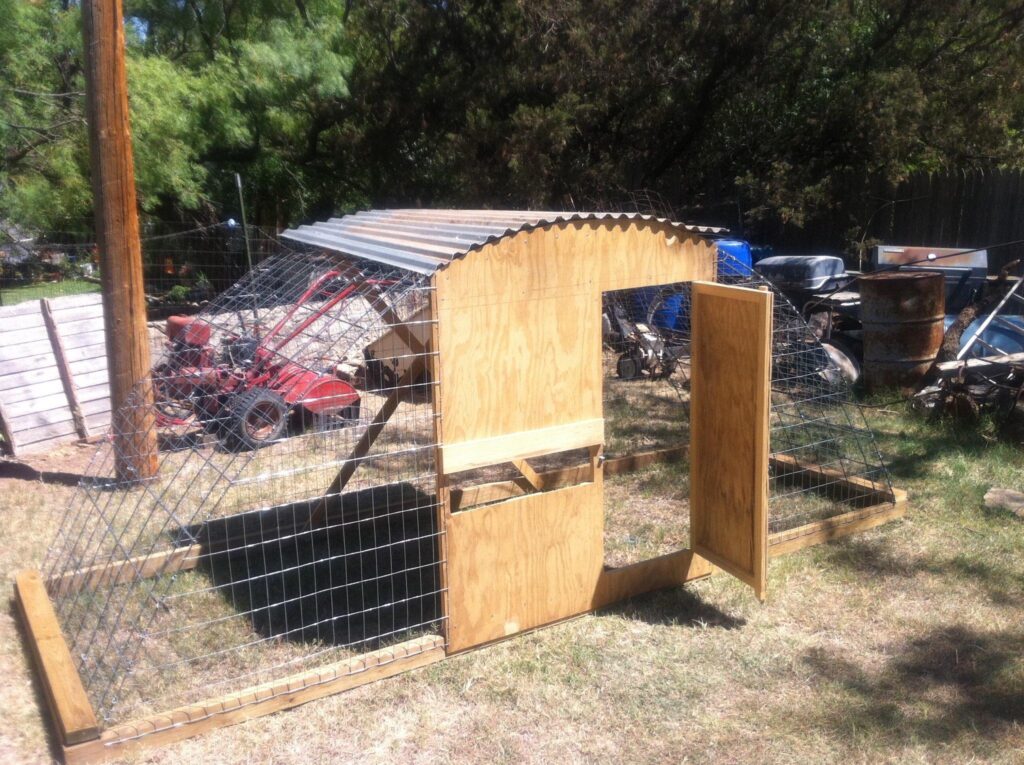
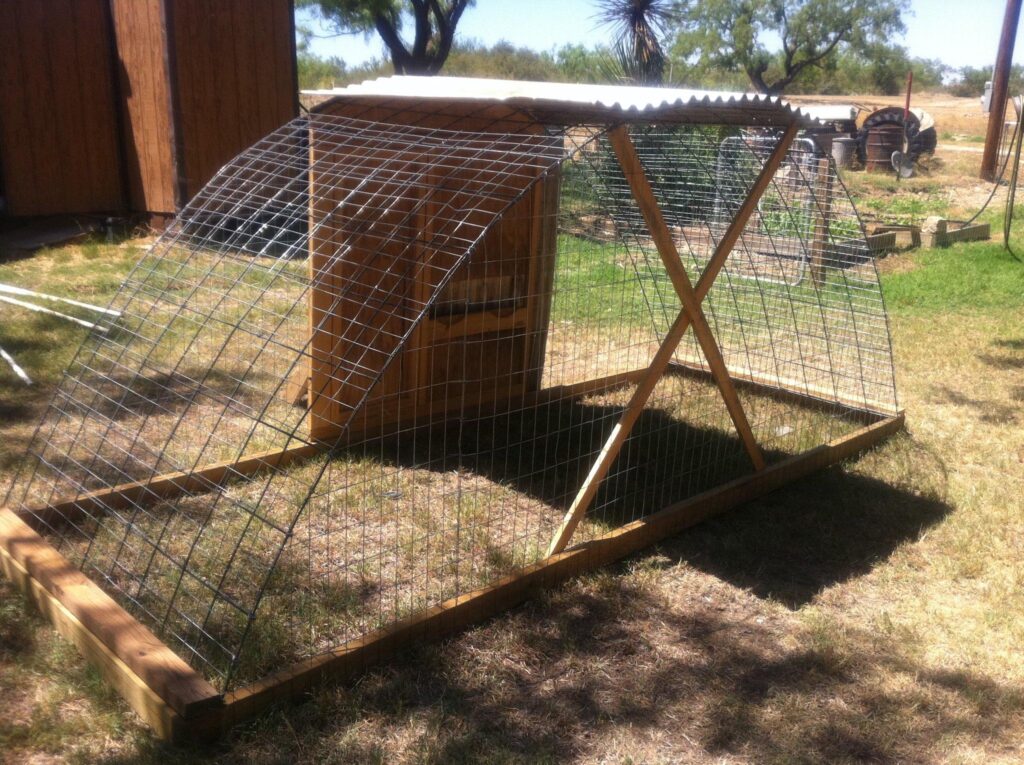
The latter two pictures are the cattle panel chicken tractor in progress, the top image is it finished.
I asked David how he decided on the plan and he said he just eyed it out and started building. That’s my kind of construction! Except his tractor looks better than most of what I build.
One change I would make on this design is adding hardware cloth instead of the wider wire fencing on the outside. That will keep it free from smaller predators such as rats.
More Chicken Tractors Incoming
The main problem with the cattle panel chicken tractor I built is the weight. It’s very strong, but too heavy. It’ll work, especially now that I figured out how to add wheels, but it’s not idea. I understand the PVC design better now. The next one will probably be made from PVC.
What? Another chicken tractor?
Yes. You see, we had some new friends arrive yesterday. In a box.
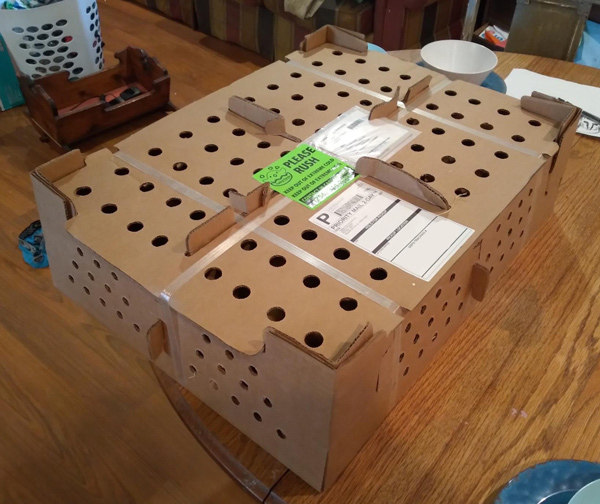
Hey guys, let’s get out of that bow and into the guest room, okay?
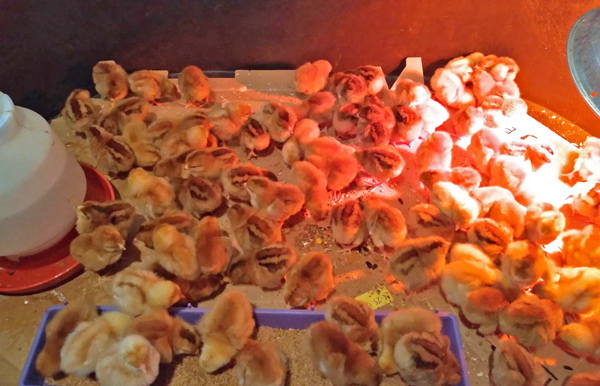
Wow. There are a lot of you!
Yes – we got chicks in the mail. We bought from Valley Farms Hatchery in North Alabama and were very pleased with how happy and healthy the chicks are. The order is a combination of production brown egg layers and Red Broilers for meat. The latter can be raised to adulthood and reproduced, unlike Cornish Cross birds. They take longer to hit a good slaughter weight but the meat is reportedly better tasting.
I am looking forward to seeing how they grow (and taste). We’ve eaten Cornish Crosses in the past, raised on grass, and found them to be delicious. We’ve also eaten hens and roosters from various non-meat breeds and enjoyed them. I don’t mind a tough chicken, as the flavor of a free-ranging bird is significantly better than anything you can buy at the grocery store.
In fact, I find grocery store chicken disgusting and usually refuse to eat it. Homegrown is a different animal.
A Final Announcement
Finally, I am pleased to announce the release of WINNING THE WAR ON WEEDS by John Moody, published by Good Books.
This is the first book we’ve released by an author other than myself. John is an expert on small-scale farming and land management. The book is well-worth owning and I highly recommend it. We are quite pleased he trusted us to republish it in a new edition.
But enough for today – I have to go tend the chickens. Bawk bawk.

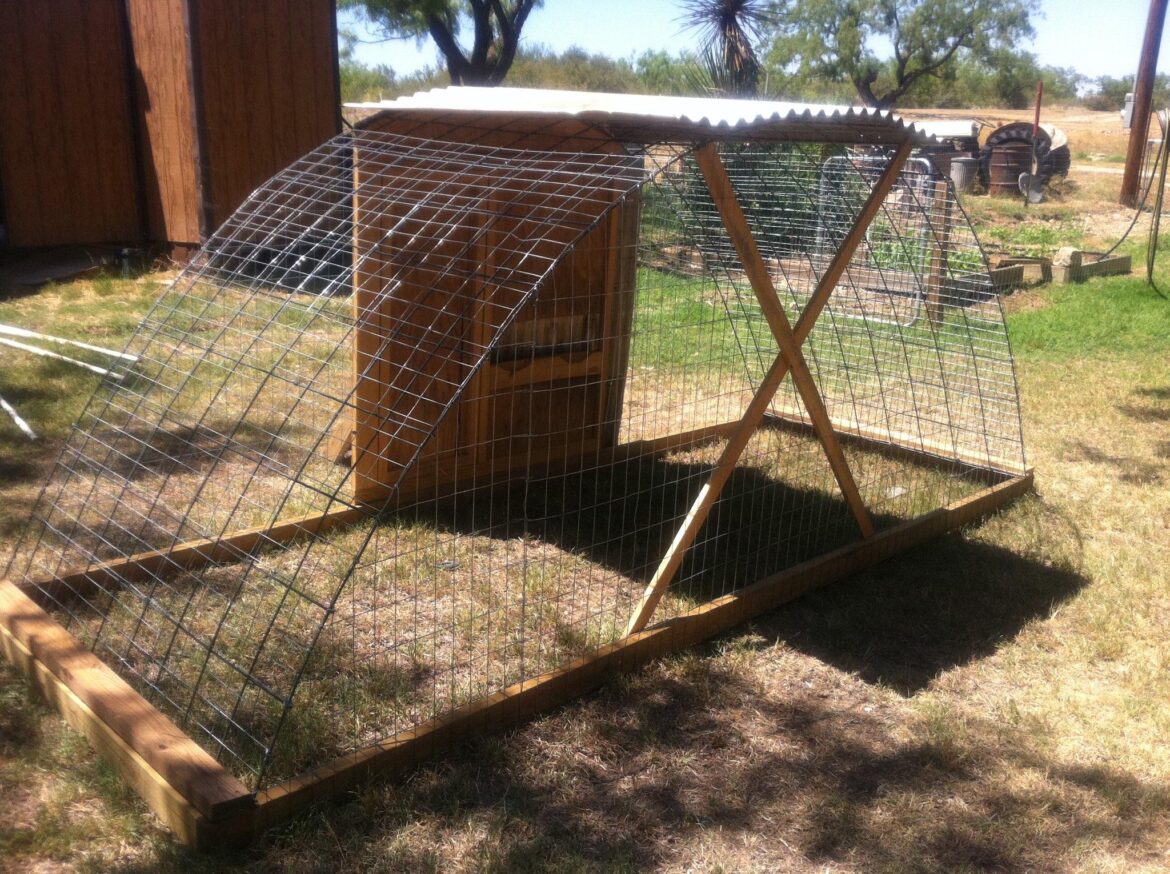
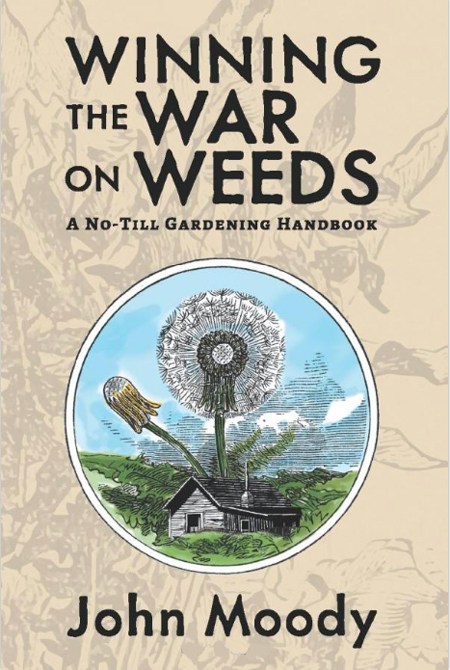
5 comments
Definitely giving me ideas for when we finally get poultry. I really want to get some guinea’s but we have a lot of hawks and coyotes have increased here as well. We have tick issues and I hear they are the best for that but that they eventually leave and follow the hens into the open and are picked off eventually. Still, I wonder if it is possible to receive males only and possibly avoid that issue altogether. I picked up Mr. Moody’s book last night and your book Grow or Die as well. I need all the help I can get on survival crops and weed pressure. Anyway, really looking forward to talking with you at the Milton, FL event and hopefully coming up to visit you in Atmore someday soon.
Ok, this new cattle panel design is interesting. I’m curious to how it compares to the other in weight. I’d cut down on the overhead roofing, I think, which would save a bit of weight. The chooks need SOME shade down in the south, but not all shade. The ones with just roofing on the center are better, but I’d shift it all to one side instead. Lower roof is better wind protection.
I’d probably build some real roosts in there too though I’d scratch my head over that a bit. Something light like dried pine sapling trunks (1″ diameter or so, probably need replacing annually) or if I felt like spending some $, wooden broom handle replacements.
Right now still running my two 2x4x8′ pvc and hardware cloth tractores, with half covered and sided with roofing. I tried using plastic tarps, thick ones, for that, but the sun did them in in less than a year. And they fall apart in messy fashion. And a stray dog tore one up fast (try that with metal roofing, mutt!). I put a nest box (milk crate with one end cut out a bit) in one and tied that to one side and top with cable ties (used cable ties to secure the hardware cloth too) and they have held up pretty well. They are in their second year now and only real issue is some of the cable ties need replacing now and then. Nice and light. But I run 5 full-grown chooks in them at most and move them twice a day. The door is one 2×4′ section of the top. I ran a 2×4 piece across top to provide some support on each side of the door and use one with some hooks in it to hold their water and feeders. (I also ran a 1×2 across the bottom in the middle to add a bit of support two.) That way can move them easily without having to fiddle with those containers MOST of the time. Occasionally they knock them off hooks (usually it’s when I have multiple roos in one tractor.)
My only real complaints with these are how many birds I can pack in and that I can’t get into them to catch the birds (though a right-sized landing net allows that.) They are nice for things like segregating some hens and a roo I want to breed. Or raising a batch of chicks once they are feathered. So I expect to always have some. I can also move them through my new wider garden walkways if I like. The aren’t good on my raised beds, though, because I didn’t make those wide enough. Live and learn.
Enough with the chicken tractor dissertation!! :p
I built a 4*12 tractor with a 1*2 wood base (instead of 2*4 wood). The negative for this purpose is that it’s not pressure treated, so it rotting. I used the PVC arches and the welded wire and poultry netting for the enclosure (found on craigslist for cheap!). I drilled out a slot for the PVC to fit into the wood and screwed it down. Then everything else was zip-tied. I framed out the end similar to what you did for a doorway as well. Threw a tarp over half of it. I did not frame the back for laying boxes or water.
Pros:
1. Light weight.
2. Secure enough for our needs (once I put the poultry netting on at least).
Cons:
1. It’s a hassle to get the chickens in/out of the tractor and to/from the tractor. Especially the young ‘uns… They do get used to it a little, but it’s still a pain. I used it more before I fenced in a run but the tractor rarely went far from the coop. After adding the run the reality is I don’t use the tractor often because of the hassle. Suppose that’s on me to some degree, but the ‘system’ doesn’t work for my expectations in general. I really like the chicken run set up that Sean/Sasha are doing at Edible Acres. I’m slowly moving toward a smaller scale of their chicken/compost system.
2. Wished I would have put wheels, a laying box, and a spot for water. Was trying to keep the cost and weight down.
3. Rotting wood. Though the 2*4 pressure treated wood would (stutterer) have been heavier/costlier. It was built 5-6 years ago (I measure time by my children, so it was definitely before my youngest daughter was born). Not too shabby I suppose for thin pieces of wood…
It comes in handy with keeping chickens segregated (breeding or peeps). And if we’re out of town for an extended time I can rig up a tunnel from the coop/enclosed run to make their space a little bigger (honestly should get some type of automated door for the coop).
I applaud your decision to use a heritage breed (or whatever you call the non-hybrids) instead of Cornish Crosses. Everyone I know who raises broilers swears by Cornish Crosses, and I’m always like, yeah but what do you do if the hatchery suddenly has no more chicks available? What if the post office stops delivering? Sure you have to spend more time growing them out so there’s a bit more input financially, and there tends to be more dark meat and smaller breasts, but you have the security of knowing you can keep breeding more instead of relying on having to buy chicks multiple times a year. Personally I’ve never grown the C-monsters. Their inability to reproduce offends my sensibilities…like Monsanto terminator seeds. I mean to each their own, but I’ll take the old-school sustainable option over technological systems that require perpetual external inputs.
Yeah, I am feeling that way too. I would raise CCs for fast meat, but it’s not my favorite.
Comments are closed.